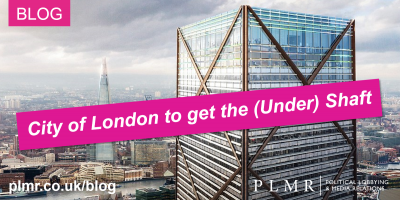Being a skyscraper architect in London must be a frustrating job. You spend months – years even – designing a gleaming tower of steel and glass. It offers commanding vistas across the metropolis. It has clean lines and elegant curves in all the right places. It is a career defining triumph (and, fingers crossed, it won’t melt the parked cars below). You give your majestic creation an appropriate name – something tasteful, refined and understated. Your place in architectural history is assured, surely.
And then those witty coves in the press come along and decide to give your masterpiece a shorter, pithier nickname. Something a cab driver can easily remember. And, sadly, that tasteful, refined and understated name you came up with is lost as a historical footnote. Such has been the fate of many of London’s most iconic landmarks in recent times: the Millennium Bridge (‘the wobbly bridge’), 30 St Mary Axe (‘The Gherkin’), 20 Fenchurch (‘The Walkie Talkie’) and the Leadenhall Building (‘the Cheesegrater’).
Perhaps with this nomenclature phenomenon in mind, the architects behind London’s latest proposed skyscraper (Eric Parry Architects) seem to have concocted a name – One Undershaft – that almost defies ridicule. Indeed, one kind of hopes that the writing staff at the Evening Standard will come up with something better, and soon.
Located in close proximity to a cluster of existing skyscrapers – the Leadenhall Building, the Gherkin, and the Heron Tower – this new building will be the tallest within the Square Mile, and the second tallest in both London and the UK after The Shard. Standing at 294.6m and with 73 floors, the design is ambitious. The whole building will be constructed 10.5m above the ground to allow for a large public space at street level and 1,800m² of retail and restaurant space in a basement level. A planning application is expected to be submitted early next year.
One Undershaft is one of an estimated 263 tall buildings (those with 20 storeys or more) that are planned for London’s skyline. That so many tall buildings are in the pipeline clearly demonstrates not only the continued vitality of the capital’s property and development sector but also the extent to which rising land values in London are forcing developers to increase the height and density of their projects. This figure also suggests that the burgeoning in-trays of local authority planning departments will continue to be overburdened as planners must consider not just a rising volume of applications but also increasingly complex and challenging schemes.
Due to their scale, all of these 263 developments would also fall within the remit of the Mayor of London’s call-in powers, indicating that developers will be watching next year’s London elections very closely, as well as any subsequent amendments to the London Plan made by the new Mayor (regardless of party).
The capital’s skyline has certainly come a long way since 1098, when the White Tower of the Tower of London became London’s first recorded tall building at just 27 metres. (History does not record if naming it the White Tower was the choice of the architect or a sarcastic medieval scribe). With both of the leading mayoral candidates highlighting housing as a key issue for London, developers will be waiting with baited breath to see what impact Boris’s replacement will have on their plans for the skyline of the future.




